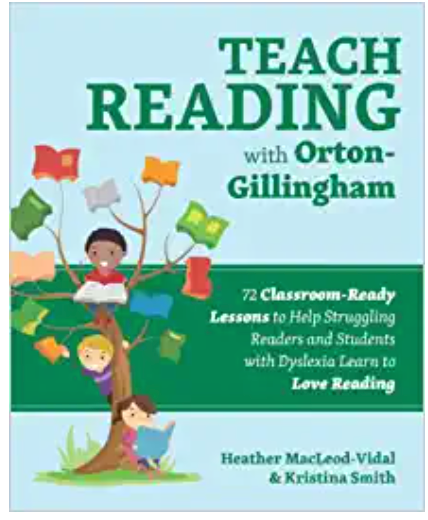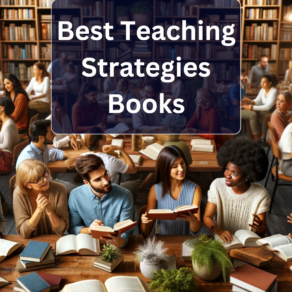Teaching reading books are the topic of our blog post today!
Reading is the foundation of learning. It helps unlock a world of possibilities and learning experiences that are not possible to access otherwise. Not only does it provide learners with valuable knowledge and skills, but the ability to read can open doors to a world of literature, culture, and information that will stay with them for the rest of their lives. Teaching kids how to read can be a challenge which is why finding helpful books to aid in the process is critical for uncovering new possibilities in education.
In this post, I share some of the best books available for teaching reading so that you can give your child the best start possible! I believe that being able to access books that are both educational and engaging is key to helping young minds develop reading comprehension and literacy skills.
This post covers some of the top books for teaching reading in a fun and creative way designed to inspire enthusiasm for language learning in your kids! For high school students, check out the ultimate reading list for high school students.
Teaching reading books
Here are our top picks for best teaching reading books:
1. Strategies That Work, by Stephanie Harvey, Anne Goudvis
If you’re looking for techniques to improve reading skills, Strategies That Work: Teaching Comprehension to Enhance Understanding is the ideal book for you. It covers how children can learn by making connections, asking questions, visualizing, inferring answers, extracting ideas, and synthesizing information.
2. The New Art and Science of Teaching Reading, by Julia A. Simms, Robert J. Marzano
The New Art and Science of Teaching Reading outlines the stages of reading development and provides more than 100 reading-focused instructional strategies.
The book is structured around five key topics: (1) foundational skills, (2) word recognition, (3) reading fluency, (4) vocabulary, and (5) reading comprehension.
Teachers can use this information to ensure every student becomes a proficient reader. Each chapter includes examples of how to apply the strategies in the classroom, making it easy to incorporate the latest research into best practices.
3. How to Plan Differentiated Reading Instruction: Resources for Grades K-3, by Sharon Walpole, Michael C. McKenna
This invaluable guide helps teachers plan and deliver effective differentiated reading instruction tailored to each student’s needs. The authors provide a detailed framework for implementing differentiated small-group instruction over multi week cycles, addressing each component of the beginning reading program:
phonological awareness, word recognition, fluency, vocabulary, and comprehension. The book includes dozens of reproducible lesson plans, instructional activities, assessment forms, and other tools, all in a large-size format for easy photocopying.
4. Know Better, Do Better: Teaching the Foundations So Every Child Can Read, byby Meredith Liben, David Liben
This book is written for anyone concerned about the poor reading results of America’s students, from teachers looking for real strategies to use in their classrooms to parents trying to be better advocates for their children.
In clear and concise language, the Libens explain what foundations must be in place for all students to become literate readers and provide a wealth of practical teaching ideas based on current research.
5.Reading with Meaning, by Debbie Miller, by
Reading with Meaning is a must-read for any teacher looking to help their students build lifelong reading skills. Written by an experienced educator, this book dives into the importance of strategy and how intentional teaching can provide each child with a year’s worth of growth in just one classroom year. Featuring current research in the field, this guide also offers teachers advice on developing relationships with their students and fostering a love of reading.
6. The Reading Lesson: Teach Your Child to Read in 20 Easy Lessons (1), by by Michael Levin MD, Charan Langton MS
This bestselling program was developed by pediatrician Michael Levin and uses phonics and keyword recognition to teach children to read in 20 easy lessons. The innovative and guided approach makes learning to read simple, and the program has been successful in teaching children with disabilities.
7. Shifting the Balance, by Jan Burkins, Kari Yates
Written by experts in the field, this book provides concise and practical tips for strengthening your approach to early reading in six key areas: comprehension, phonemic awareness, phonics, high-frequency words, cueing systems, and text selection. Every chapter is packed with helpful strategies that are easy to put into practice in your classroom.
8. Teach Reading with Orton-Gillingham, by Kristina Smith, Heather MacLeod-Vidal
Teach Reading with Orton-Gillingham offers 72 classroom-ready lessons, complete with tips, pictures, reference charts, and more. Each of the 9 unique units included in this guide focuses on a different skill set, such as vowel sounds or suffixes. Plus, there are plenty of ideas and strategies for customizing this approach to best meet the needs of your students – whether you’re working one-on-one, within small groups, or in a whole-class setting.
9. 180 Days of Reading: Grade 2, by Christine Dugan
This daily reading workbook is perfect for after-school and intervention programs, as it provides students with regular practice. The quick diagnostic-based activities are great for assessing progress and determining individual needs. Fiction and nonfiction passages are both included, along with data-driven assessment tips. There’s also a Digital Resource CD with assessment analysis and electronic versions of the daily practice activities. This resource is aligned with the interdisciplinary themes from the Partnership for 21st Century Skills, making it an ideal choice for classrooms and homes alike.
10.Teach Your Child to Read in 100 Easy Lessons, by Siegfried Engelmann , Phyllis Haddox , Elaine Bruner
This program is based on Direct Instruction, which has been shown through formal studies to be the most successful reading program available. In 100 lessons, color-coded for clarity and ease of delivery, you can give your child the basic and more advanced skills needed to be a good reader.
11.The Art and Science of Teaching Primary Reading, by Christopher Such
The Art and Science of Teaching Primary Reading provides a comprehensive overview of the reading process, from early phonemic awareness through to deep comprehension. Each chapter includes helpful classroom tips and activities, as well as guidance on how to measure progress and adapt teaching to meet the needs of each individual child.
12 The Next Step Forward in Guided Reading, by Jan Richardson
This book is jam-packed with all the planning and instructional tools you need to get started, from pre-A to fluent reading levels. You’ll find prompts, discussion starters, teaching points, word lists, intervention suggestions, and more to support all students – including dual language learners and struggling readers.
Plus, there are 29 comprehension modules that cover essential strategies like monitoring, retelling, inferring, summarizing, and many others. And if that wasn’t enough, there’s also an online resource bank with dozens of downloadable assessment and record-keeping forms.
13.The Reading Strategies Book: Your Everything Guide to Developing Skilled Readers, by Jennifer Serravallo
The Reading Strategies Book is a guide to help teachers develop skilled readers. With 300 strategies to choose from, this book covers thirteen goals for reading development, including fluency, comprehension, and literary analysis.
Each strategy is cross-linked to skills, genres, and Fountas & Pinnell reading levels to make it easy to find just-right teaching tips. The book also includes Jen’s Teaching Tips, Lesson Language, and Hat Tips to influential teacher-authors to help you personalize instruction for each student.
14. Learn to Read Activity Book: 101 Fun Lessons to Teach Your Child to Read, by Hannah Braun M. Ed.
Learn to Read Activity is a book that helps you teach your child the art of reading. With 101 cumulative phonics lessons, your child will be engaged from start to finish.
Each lesson features coloring, mazes, word searches, and other exciting activities that will help them learn how to recognize letters, sound them out, and put them together in complete words and sentences.
15 Sounding Out the Sight Words: An Alternative to Rote Memorization, by Denise Eide, Cindy Kringelis
Sounding Out the Sight Words is a revolutionary new phonetic approach to teaching reading. Rather than teach one new sight word each day, this book teaches one phonetic concept each day. In 67 lessons, students learn the tools to read all 315 of the Dolch words, as well as thousands of other words.
This approach is designed for busy parents or teachers, who can deliver the lessons in 2 to 10 minutes each. The simple format makes it easy to follow along and sound out the sample words.
Final thoughts
Wrapping up, I can’t emphasize enough how critical these teaching reading books are in nurturing effective, compassionate, and innovative educators. Reading has been at the core of my own professional development, and I’ve seen firsthand how powerful it can be to bring these insights into the classroom or even casual discussions with parents. For anyone who’s ever questioned the impact of a good book, let me tell you, it goes beyond just personal enlightenment; it leads to real-world, actionable change in educational settings.





















